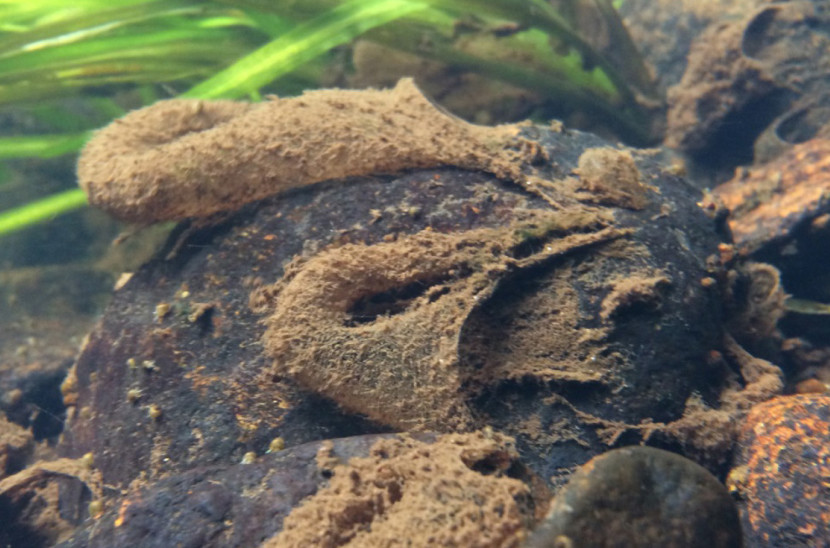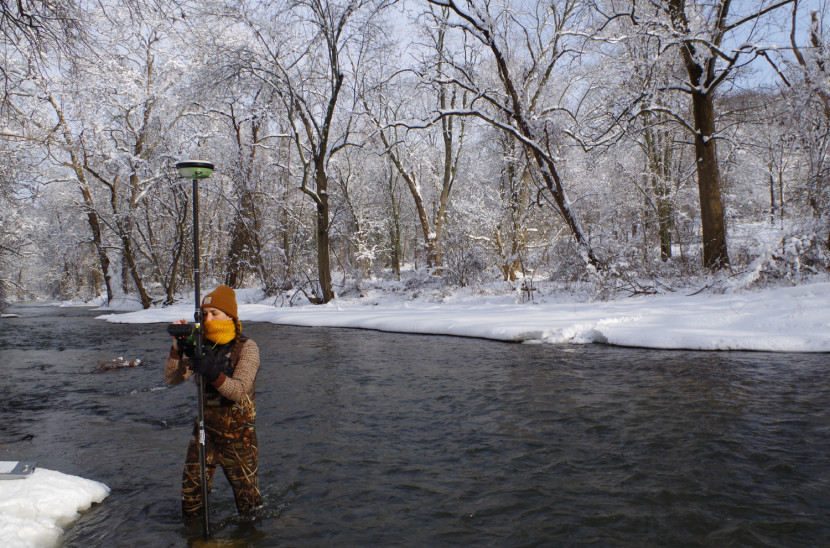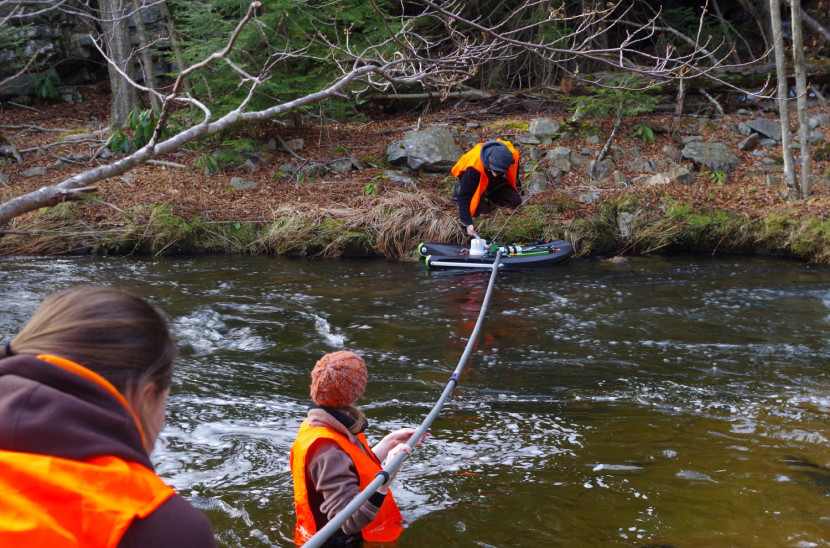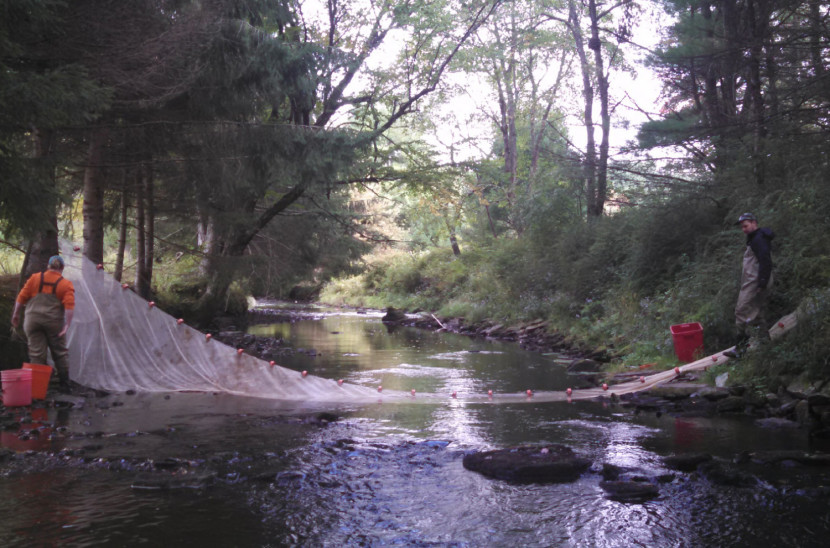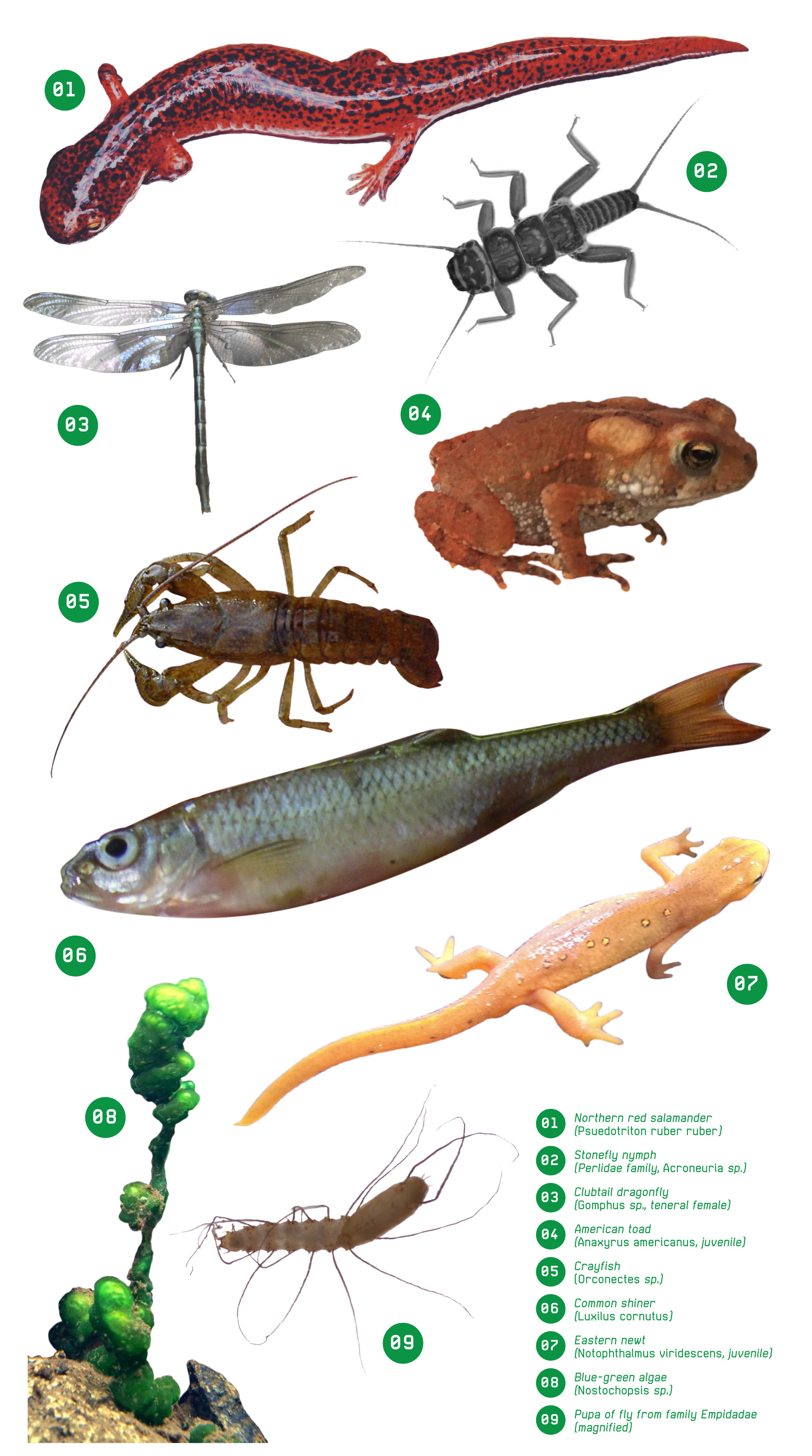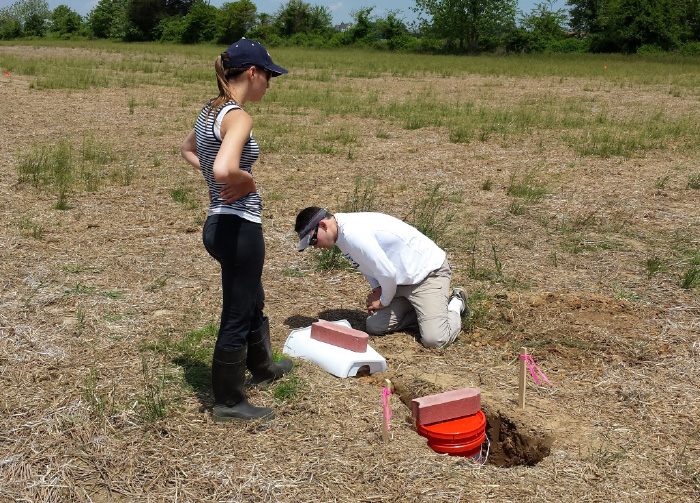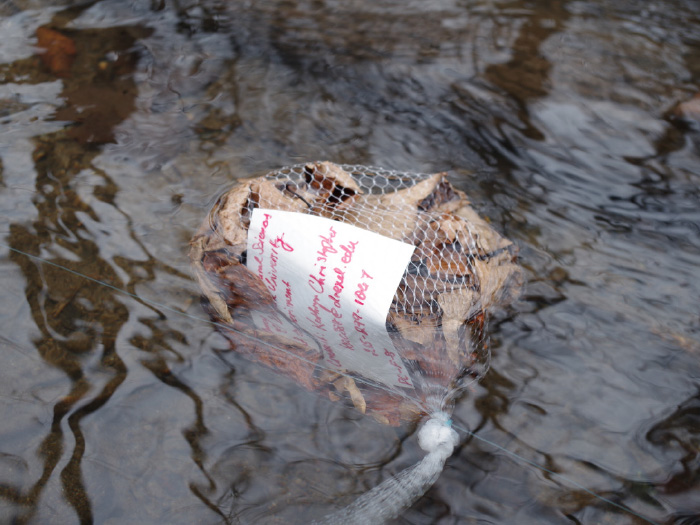When fish biologist Richard Horwitz talks about streams in the Delaware River Basin, people listen.
Horwitz, a senior scientist at the Academy of Natural Sciences of Drexel University who has worked in the region for nearly 40 years, isn’t your typical fish expert — he’s also a student of environmental history and a keen observer of all living things. When he walks a stream, he is not only studying what’s in the water, he is also looking all around, ahead and behind.
With this perspective, he understands how the land and the streams it drains into, together forming a watershed, are connected. He and his colleagues in the Academy’s Patrick Center for Environmental Research know that everything we do on land has implications for the health of streams, the species that live in them and the people who depend on them. Since 1947, the Patrick Center has been devoted to studying the health of watersheds through its embodiment of this holistic view. The center is named for its founder, Ruth Patrick, who developed the fundamental “Patrick Principle” on which much of environmental science and management is based: that biological diversity holds the key to understanding the environmental problems affecting an ecosystem. Patrick helped to write the Clean Water Act, and over the past half century Academy scientists have continued to influence river science, policy and management.
So when the William Penn Foundation looked for an institution to help guide a massive new collaboration of conservation groups to improve water quality in the Delaware Watershed, the Academy was an obvious choice.
The foundation had honed its vision for clean water in the Delaware through early conversations with experts like Horwitz; Roland Wall, the Academy’s senior director for environmental initiatives; and Carol Collier, the former executive director of the Delaware River Basin Commission who later joined the Academy.
The William Penn team concluded from these discussions that only a sizeable investment could make a measureable difference for the Delaware’s water quality. On April 1, 2014, the foundation pledged $35 million to protect the watershed’s healthiest streams and restore impaired ones to good condition.
The foundation awarded the Academy oversight of the multi-year effort, christened the Delaware River Watershed Initiative (DRWI).
The Academy and one of its partners, the Open Space Institute, kicked off the project by identifying the highest-priority “clusters” of smaller watersheds throughout Pennsylvania, New York, New Jersey and Delaware that feed into the Delaware River Basin. Academy researchers are now guiding more than 40 grantee conservation groups as they establish baseline conditions for water quality and begin restoring areas where the foundation’s investment in conservation has the potential to do the most good.

Water_Logged
Delaware River Watershed Initiative conservation and monitoring activities are underway throughout the 6,575 square miles of the Delaware River Basin in clusters of smaller watersheds that are targeted for agricultural restoration, suburban restoration, protection of intact forests, or a combination.
A FRAGILE RESOURCE
From its fountainhead in the Catskill Mountains in New York, the Delaware River courses over 300 miles of urban and rural landscape and four different states on its path to the Atlantic Ocean, crossing all kinds of terrain and feeding into nearly 1,000 community water systems.
There’s a direct line from the Delaware Watershed to the health and well-being of more than 15 million people who rely on it for drinking water.
Almost half of those people live outside the basin in the greater New York City area, underscoring the importance of the Delaware for the larger region.
The health of streams in the watershed varies from place to place and is tied to surrounding land use, with water quality being more impaired in downstream agricultural, suburban and urban areas. Excess nutrients and sediment loads from increased development, agriculture and urban runoff impair some streams. Toxic pollutants — including some “legacy” contaminants like DDT and PCBs from historic activities — affect others. In some places, streams suffer from drainage from long-abandoned mines.
Nonetheless, most people in the region have access to all the clean water they need. So why invest in protecting and restoring the watershed?
“It’s true that clean, abundant water is available in the Delaware River watershed now, but we shouldn’t plan on that always being the case,” Stefanie Kroll, the Academy’s project science director for the DRWI, explains. “Recent news headlines highlight the fragility of our water supply, with hundreds of thousands losing access to clean water as a result of pollution and poor management. Paying attention to the Delaware today is essential for having the same resource quality in the future.”
BIG, BOLD AND NECESSARY
It’s nearly impossible to describe the Delaware River Watershed Initiative without illustrating the scale of effort.
The eight clusters where the project will focus together cover around 6,575 square miles, or an area larger than the size of Connecticut and Rhode Island combined.
To compare data across sites and obtain reliable results, scientists and partners must execute activities and collect data similarly from site to site. Coordination and standardization, which are baked into the initiative’s design, are rare in a project involving so many actors.
And the cast is literally in the hundreds. The coordinating group members — the William Penn Foundation, the Academy, the Open Space Institute, the National Fish and Wildlife Foundation and the Institute for Conservation Leadership — each have their own expert teams.
There are also dozens of local organizations working within individual clusters to put protection and restoration strategies into practice.
“You won’t find other watershed projects that engage so many organizations,” observes Collier, now the Academy’s senior advisor for watershed management and policy. “The DRWI is a wonderful example of how to build support from the ground up. After all, it takes all the citizens of a watershed to make a clean, healthy river system.”
MONITORING FOR IMPACT
Good water quality is essential not only to people, but also to the species that rely on the Delaware’s aquatic systems.
From the tiniest algae to the majestic bald eagle, degraded water affects the flora and fauna living in and around it.
“If you put a garbage dump next to your house, everyone who lives in the neighborhood is going to move,” says Kroll. “Animals and plants are the same way. They don’t want to live in horrible conditions, so their presence or absence tells us if something has happened in the past year.”
The disappearance from degraded sites of species that need high-quality habitat, and the proliferation of more tolerant species, is at the core of biological monitoring, she says.
At dozens of sites, Academy scientists sample algae, macroinvertebrates, crayfish, fish, salamanders and water chemistry (the Academy’s current monitoring projects on the Delaware River are described on the following pages). Together these indicators, along with measures of water flow, temperature and streamside conditions, illustrate ecosystem health.
For instance, salamanders often disappear or show abnormalities when exposed to pollutants, but the types of pollutants may be unknown. Different kinds of algae can help fill in the picture by indicating whether heavy metals or excess nutrients have been in the water.
ACADEMY AT THE HELM
Local organizations are adopting Academy protocols and undertaking their own monitoring programs at individual sites, often for the first time. Academy scientists are providing guidance, to ensure consistency of methods so that all the data can ultimately be used together.
The data from more than 300 sampling sites will help scientists understand whether the initiative’s stream restoration and protection activities are improving water quality. If they are, then there is a good argument to replicate them elsewhere in the Delaware and beyond. If they aren’t, then it’s important to figure out why and consider changing course.
Evaluating what works may seem like common sense. Yet a landmark 2005 study of thousands of stream restoration projects in the United States found that the vast majority lacked rigorous scientific evaluation of whether the projects were successful.
The DRWI built in evaluation from the start.
“The William Penn Foundation emphasized the importance of scientific credibility from our earliest discussions with them,” says Wall, the Academy’s team leader on the DRWI. “They made sure that monitoring and assessing ecological quality were going to play a central role in the project.”
As the monitoring program gets fully underway this year, it will begin generating scores of datasets for integration into a single database accessible to all project partners.
This standardized dataset, which Kroll happily refers to as a “luxury,” will be an accomplishment in and of itself. But the real achievement will be using it to understand what it takes to move the needle on water quality at a scale that will make a difference to the millions of people who live, work and play in the Delaware River Watershed.
This story first appeared in Academy Frontiers, the magazine of the Academy of Natural Sciences of Drexel University.


